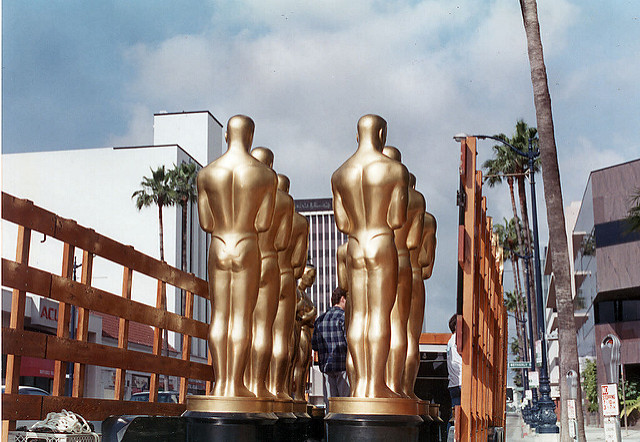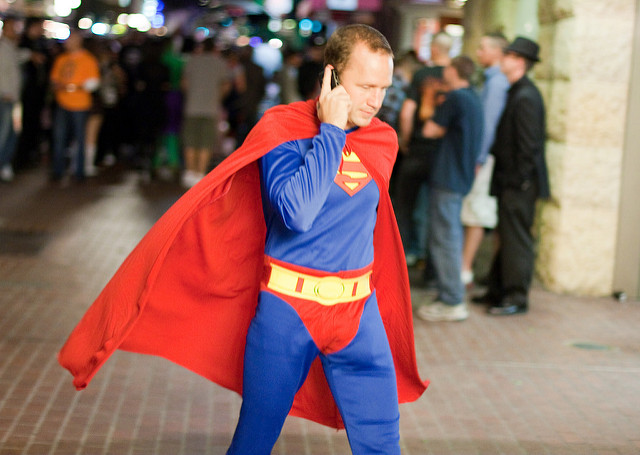Unlock the Magic in Your Story Now
Get the Free 20 questions to Ask Before Launching Your Idea workbook when you sign up for occasional updates.
Get the Free 20 questions to Ask Before Launching Your Idea workbook when you sign up for occasional updates.
Articles filed in: Storytelling
The Choice
filed in Storytelling, Strategy
 We know how the trip will pan out even before we get on the tram. The driver is agitated. He uses his bell accordingly. He repeatedly ‘dings’ three times, announcing his tram’s presence on the road. His bell is warning system—reflecting his mood. Everything becomes an emergency. How the driver operates the bell changes his attitude and the way he drives the tram. It also changes the posture of the passengers on board. We collectively become jumpier.
We know how the trip will pan out even before we get on the tram. The driver is agitated. He uses his bell accordingly. He repeatedly ‘dings’ three times, announcing his tram’s presence on the road. His bell is warning system—reflecting his mood. Everything becomes an emergency. How the driver operates the bell changes his attitude and the way he drives the tram. It also changes the posture of the passengers on board. We collectively become jumpier.
Contrast the ‘treble ring’ warning system with the way most Melbourne tram drivers use the bell. They ‘ding’ in a potentially dangerous situation—to alert a cyclist and distracted pedestrians or to let passengers know the tram is about to start moving. Often their bell signals a friendly greeting to other tram drivers as they pass each other on the road. I can empathise with the ‘treble ring’ tram driver. Perhaps he’d just had one of those days? But he has more power than he realises.
We each get the chance to, as author Neil Gaiman says, ‘make the world better for our having been here.’ How we show up to do that is a choice.
Image by Edward Blake
The Best Of Us
filed in Storytelling, Success
 Our youngest son got his first paying job at a fast food restaurant this summer. He’d walked up and down the street handing out resumes for days and got a single call back. He was interviewed over the phone and invited in for trial one evening. He got the gig. Twenty dollars an hour and as many shifts as he could handle taking orders and wiping tables late into the night. The shifts ran from the evening until the early hours of the morning. Sometimes he was barely in bed before dawn. But he stuck with it for the entire summer without complaining. Then one day he mentioned he hadn’t been paid for a couple of weeks. His boss owed him over a thousand dollars in back pay.
Our youngest son got his first paying job at a fast food restaurant this summer. He’d walked up and down the street handing out resumes for days and got a single call back. He was interviewed over the phone and invited in for trial one evening. He got the gig. Twenty dollars an hour and as many shifts as he could handle taking orders and wiping tables late into the night. The shifts ran from the evening until the early hours of the morning. Sometimes he was barely in bed before dawn. But he stuck with it for the entire summer without complaining. Then one day he mentioned he hadn’t been paid for a couple of weeks. His boss owed him over a thousand dollars in back pay.
My husband and I reacted as many parents would. We were suddenly on guard, wary that our child (who is his own man now) wasn’t exploited. We offered unhelpful suggestions about what he should do next, telling him he probably shouldn’t work more shifts until he was paid. Our boy didn’t blink. Not showing up wasn’t an option. He’d committed, they were short staffed. He wouldn’t let his other team members down.
I remember when he was seven years old and winning prizes for being top in everything at school. The quiet, watchful blonde kid with deep brown eyes, who seemed to make no effort and yet always come out on top. After an assembly where he was awarded a medal for the best piece of creative writing in the state, one of the class Mums approached me. She had two questions. ‘What does he read? What do you feed him?’ I laughed until I realised she wasn’t joking.
People who don’t know our son judge him by his academic performance. He’s evaluated by his grades and ability to ‘achieve’ in the conventional sense of the word. What they don’t often see is the real measure of him. His kindness. His sense of fairness. His tenacity. His wicked sense of humour. His character. The things that can’t be measured. The things that make him, him.
He will probably be picked one day because of how he looks on paper—for his scores or the number of research papers he’s published. Whoever works with him won’t know until later why they are lucky to have him on their team.
Our stories are not defined only by what is seen and known. The imagination can’t always capture the best and the beauty of us.
Image by Robin Jaffray
How To Craft A Powerful Message
filed in Storytelling, Strategy
 The acceptance speeches are the highlight of every Oscars ceremony. I’m a sucker for them. It’s fascinating to see how the best communicators in the world share their personal message in a just minute or two. This year, actress Frances McDormand stole the show. This wasn’t an accident. Frances knew how she should craft her message to create the change she was seeking. And while our delivery may not be as fabulous as Frances’, we can get better at crafting more powerful messages by following these three steps.
The acceptance speeches are the highlight of every Oscars ceremony. I’m a sucker for them. It’s fascinating to see how the best communicators in the world share their personal message in a just minute or two. This year, actress Frances McDormand stole the show. This wasn’t an accident. Frances knew how she should craft her message to create the change she was seeking. And while our delivery may not be as fabulous as Frances’, we can get better at crafting more powerful messages by following these three steps.
Three Steps To Crafting A Powerful Message
1. Determine the who
Who is your audience?
Why are they here?
What do they care about?
2. Work out your what
What do you want the audience to know, think, feel, say and do as a result of hearing your message?
3. Work on your how
How can you craft and deliver the message in a way that helps you to achieve your goal?
All great storytellers begin with the end in mind.
Image by Kevo Thomson
Make Fewer Promises
filed in Marketing, Storytelling, Strategy
 It’s a Saturday night. Jeff, the on-call Planning Enforcement Officer for the local council, is just about to sit down to a takeaway meal and a movie with his wife when his phone rings. Residents close to a new nightclub want him to come and assess the noise levels at the venue. Even before the conversation starts, Jeff is not primed to listen. What he thinks is a good outcome—getting the caller off the line in the quickest time possible, doesn’t align with what the caller thinks is a good outcome—Jeff dropping everything and getting around to the nightclub in the next thirty minutes.
It’s a Saturday night. Jeff, the on-call Planning Enforcement Officer for the local council, is just about to sit down to a takeaway meal and a movie with his wife when his phone rings. Residents close to a new nightclub want him to come and assess the noise levels at the venue. Even before the conversation starts, Jeff is not primed to listen. What he thinks is a good outcome—getting the caller off the line in the quickest time possible, doesn’t align with what the caller thinks is a good outcome—Jeff dropping everything and getting around to the nightclub in the next thirty minutes.
Misaligned expectations are the greatest source of dissatisfaction in any service interaction. You can’t begin to satisfy or delight your customer unless you are prepared to meet his expectations. Two things need to be in place to make that happen. Firstly, you need to understand the customer’s desired outcome. And secondly, you need to have the resources and the willingness to meet it.
If the last thing Jeff wants to do when he’s on call is get in his car to investigate complaints, then it’s unlikely he’ll satisfy ratepayers. The way he handles incoming calls is affected by his desire to enjoy a quiet night at home. His tone will be defensive and his manner abrupt. The organisation does more harm than good by having a 24-hour hotline that sets the expectation that an officer might visit in an emergency if that’s unlikely to happen.
Excellence is about making fewer promises that you always keep.
Image by Nathan Rupert
Why Do You Want To Tell A Good Brand Story?
filed in Marketing, Storytelling, Strategy
 Why do you want to get better at storytelling?
Why do you want to get better at storytelling?
When I ask clients and potential clients that question, I get a mixed bag of answers.
By far the most common reason is to increase brand awareness. Conventional wisdom argues that the more people who know about your product or service, the greater chance you have of selling more products and services. The simplest way to make everyone aware is to buy the attention of the most people. But the downside to that strategy is that you’re wasting resources speaking to people who have no interest in hearing or buying from you.
The second most common answer is to speed the process of attracting more customers. This mindset can lead business owners down the path of compromise, which presents its own unique set of challenges. You can’t do your best work when you start appealing to customers who don’t share your worldview. When you do, you attract the kind of customers your business is not designed to serve well.
Another reason commonly offered is to make sure to be seen in the right light by the right people. And while it’s smart to think about the audience you hope to engage with, you need to be mindful of telling a story that isn’t true just because it resonates with the people you’re speaking to.
Three Lessons From Great Brand Storytellers
1. Allocate resources where they have the most impact.
2. Get clear about the kind of customers you do and don’t want to attract.
3. Be as good at turning off the wrong customers as you are at attracting the right ones.
Your marketing motivations will ultimately inform your brand strategy and marketing tactics. That’s why it pays to know not just what you want to say and how best to say it, but also to understand why it’s important to you to say it at all.
Resonance begets belonging and belonging scales.
Image by rotesnichts
Who Will You Impact?
filed in Storytelling, Strategy, Success
 The bus headed back over the Golden Gate Bridge as we neared the end of our tour of Sausalito. The driver pulled over at the second last stop and turned off the ignition so that he could ‘address his guests’. Then Dwayne Johnson (the man who had the name before the celebrity who made it famous), stood facing us, looking out towards the iconic bridge in the background.
The bus headed back over the Golden Gate Bridge as we neared the end of our tour of Sausalito. The driver pulled over at the second last stop and turned off the ignition so that he could ‘address his guests’. Then Dwayne Johnson (the man who had the name before the celebrity who made it famous), stood facing us, looking out towards the iconic bridge in the background.
He explained that he loved the city he had called home for almost sixty years. He told us he regarded his job as both a pleasure and a privilege. And then he began to evangelise about the stunning monument we’d just driven across.
‘This bridge will be the standard for every bridge that will ever be built,’ he said. ‘They say Disneyland is magical. No, this bridge is magical. Even guys take selfies on this bridge.’
Dwayne explained that although it was a cold day, we were in San Francisco at a beautiful time to experience it. On foggy days much of the bridge is obscured from view. He told us that he drives across it every day, but he walks across it at the weekend whenever he can. And then he invited us to get off the bus and do the same, even though we didn’t have to because the bus was going back across it anyway.
‘Maybe you think it’s too cold or you’ll do it next time. But you don’t know if you’ll be back. And one day, when you get home, and you’re showing the photos of your trip to friends they will ask you if you walked across the bridge. Your trip will be defined by that.’
Then Dwayne stood back and gave us a moment to decide. Half of the passengers (many of whom would have left a tip in the tip jar on the dashboard at the end of the trip), left the bus to walk across the magnificent Golden Gate Bridge, as our guide got back in his seat and turned the ignition.
Dwayne Johnson doesn’t own Big Bus Tours. But he does own the power he has to touch people’s lives every day. Who will you impact today?
Image by 305 Seahill
Who Cares?
filed in Marketing, Storytelling, Strategy
 It’s easy to assume that a delicious meal is about the magic that happens when the chef, who we think has the most skin in the game, directly influences the end product. Is the perfect plate of pasta a result of the quality of the ingredients or the skill of the chef? How much does the ambience of the restaurant or the waiter’s service influence our perception of how good the food tastes?
It’s easy to assume that a delicious meal is about the magic that happens when the chef, who we think has the most skin in the game, directly influences the end product. Is the perfect plate of pasta a result of the quality of the ingredients or the skill of the chef? How much does the ambience of the restaurant or the waiter’s service influence our perception of how good the food tastes?
In any well-oiled restaurant or company, every individual understands their role in the value chain. But efficiency is only one element of a great product or experience. We know that meeting an expectation is an end to end process, which begins before the customer arrives and finishes as she leaves. But we have the opportunity to make it more of a virtuous cycle by caring.
The things that delight us are born in moments when people who care bring their skills together to create a future they want to see. Care first. Strategise later.
Image by Bruno Cordioli
Storytellers Create Value
filed in Marketing, Storytelling
 Melbourne’s newest bean to bar chocolate maker’s glass-walled factory and bright, airy cafe is stunning. Their packaging is beautiful, and their small-batch chocolate bars are delicious. The stage is set to deliver an incredible customer experience. And yet that experience promised on the roaster’s website falls flat—for want of training their staff in the art of engagement and storytelling.
Melbourne’s newest bean to bar chocolate maker’s glass-walled factory and bright, airy cafe is stunning. Their packaging is beautiful, and their small-batch chocolate bars are delicious. The stage is set to deliver an incredible customer experience. And yet that experience promised on the roaster’s website falls flat—for want of training their staff in the art of engagement and storytelling.
The chocolate roaster is a destination brand. Most customer’s who visit are not simply passing by—they come intentionally for an experience, not just to make a purchase. It’s vital that the founder invests in training her staff to understand that their job is not about completing transactions, swiping credit cards and wiping down tables.
When you pay $5 for 27g of chocolate, you’re not only buying the quality of the ingredients, and the manufacturing process—you’re buying a story. The manufacturing and sales teams are the glue that connects the customer to founder’s intention and the brand’s story. If they’re not passionate about the story and excited to share it with the customer, then they’re not creating the value they could be for the business.
Why go to the trouble of sourcing and hand sorting single origin beans in a ten-step process to make the best chocolate bar you can make, without finding the right people to share that story? There’s no point in setting the stage if the actors don’t understand the importance of the script.
A good story can’t save a bad product, but it can make a good product great.
Image by Stuart
Why You Should Choose Your Customers
filed in Marketing, Storytelling
 Marketing tactics often centre around finding customers for our products. We devote as much (sometimes more) time to generating enthusiasm for what we make, sell or serve as we do to making, selling and serving. It’s important to tell a story that resonates with the right customer. We do that by being clear about the worldview of the customer we want to attract.
Marketing tactics often centre around finding customers for our products. We devote as much (sometimes more) time to generating enthusiasm for what we make, sell or serve as we do to making, selling and serving. It’s important to tell a story that resonates with the right customer. We do that by being clear about the worldview of the customer we want to attract.
Choosing Your Customers:
- Allows you to be clear about the value you create.
- Gives you the opportunity to excel at serving the right people.
- Improves your marketing, sales and customer experience.
- Means you spend less time convincing customers and more time fulfilling their needs.
- Makes you more innovative because you see opportunities the generalist misses.
- Empowers you to build customer intimacy and loyalty.
- Helps you to become an expert in your field.
- Enables you to do your best work.
It’s as important to know who you’re not for as it is to understand the clients you would walk over hot coals to serve.
Image by Lennart Tange
What Do Your Customers Thank You For?
filed in Marketing, Storytelling
 As vulnerable humans, we’re brilliant at paying attention to threats in our midst. We are experts at mitigating against failure, which we trick ourselves into believing is the way to optimising for success. This tendency might explain our willingness to devote our resources to averting risk, solving problems and fixing mistakes.
As vulnerable humans, we’re brilliant at paying attention to threats in our midst. We are experts at mitigating against failure, which we trick ourselves into believing is the way to optimising for success. This tendency might explain our willingness to devote our resources to averting risk, solving problems and fixing mistakes.
When we focus on getting a near perfect score we sometimes overlook the opportunity to do more of what we already do well. It’s possible that regularly amplifying delight can produce better results than trying to avoid the random missteps that inevitably happen.
It’s just as important to pay attention to what makes your customers happy as it is to get to the bottom of complaints. What do you customers thank you for? Make a list. Then do more of that.
Image by Jeff Meyer